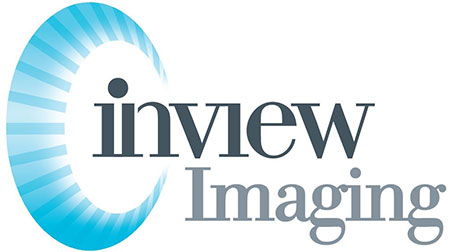Did you know that approximately 1 in 8 women in the United States will develop breast cancer in her lifetime? Understanding mammography, breast imaging studies, and breast imaging system is crucial for early detection and effective treatment. These routine screenings can detect breast cancer before any symptoms appear, significantly improving survival rates. By comprehending the importance of mammography and breast MRI scan, individuals can take proactive steps towards their health and well-being.
Mammograms, or mammography, are powerful tools in the fight against breast cancer, offering a chance for early intervention and successful outcomes. Knowing what to expect during a mammogram and why they are essential can alleviate fears and encourage regular screenings. Stay informed, stay proactive, and prioritize your health with a deeper understanding of mammography and mammograms.
Key Takeaways
-
Regular mammograms, or mammography, are crucial for early detection of breast cancer, starting at age 40 for most women.
-
Prepare for your mammogram by avoiding lotions, powders, or deodorants on the day of the exam.
-
Understanding the mammogram process can help alleviate anxiety; it involves compressing each breast between two plates for a few seconds.
-
Interpreting mammogram results may include follow-up tests like ultrasounds or biopsies for further evaluation.
-
Familiarize yourself with key terms like calcifications, density, and false positives to better comprehend your mammogram report.
-
Be aware of the risks and considerations associated with mammograms, such as false alarms leading to unnecessary stress or procedures.
Understanding Mammograms
Why They’re Important
Mammograms play a crucial role in early breast cancer detection, significantly increasing the chances of successful treatment. By detecting abnormalities such as tumors at an early stage, mammograms can save lives. Regular screenings are vital for women’s health as they enable timely intervention if any issues are found.
What to Expect
When getting a mammogram, individuals can expect a step-by-step process that involves positioning the breast on the machine for imaging. Compression is necessary during the procedure to ensure clear images, which may cause mild discomfort but is essential for accurate results. Addressing concerns about discomfort beforehand can help individuals prepare and feel more at ease during the mammogram.
Decoding Results
Understanding mammogram results is crucial for individuals undergoing screenings. The results of a mammogram report may show various findings, including cysts, calcifications, or masses. Knowing how to interpret these findings is essential in distinguishing between normal and abnormal results. Proper guidance on understanding these results can alleviate anxiety and ensure prompt follow-up if needed.
Preparing for Your Mammogram

Before the Test
When scheduling your new mammogram, consider timing it correctly in your menstrual cycle for optimal results. Bringing previous mammogram images is crucial for baseline screening mammograms to detect any changes accurately. Remember not to use deodorant before your appointment as it can interfere with the mammogram results.
Scheduling Tips
Consider using online services such as Mayo Clinic for scheduling your regular mammograms conveniently. Setting reminders for your appointments ensures you don’t miss any important screenings. Timely scheduling is essential for effective breast cancer screening to detect any abnormalities promptly.
The Mammogram Process
During the Test
Breast compression is a crucial aspect of the mammogram procedure. It helps spread out breast tissue for clear image capturing. The technologist will gently compress each breast between two plates to obtain accurate images.
Prepare yourself for the pressure during the test; it might cause discomfort but lasts only for a few seconds. The compression is necessary to ensure high-quality mammogram images are obtained.
Addressing any potential discomfort is essential. While the process may feel tight or slightly uncomfortable, remember that it is a quick procedure. The discomfort is temporary and vital for obtaining accurate results.
After the Test
After the mammogram, the images are checked for quality and clarity. This step ensures that no additional images are needed before you leave the facility. Technologists review the images to confirm they capture all necessary angles.
A routine screening mammogram typically takes around 20 minutes. This includes the time for preparation, imaging, and post-imaging checks. The duration may vary slightly depending on individual circumstances.
Rest assured that mammograms are efficient in detecting breast abnormalities early on. Regular screenings can lead to early diagnosis and timely treatment if any issues are identified.
Interpreting Results
Reading Reports
Radiologists carefully analyze mammogram images to identify any abnormalities or signs of breast cancer. They examine the findings such as masses, calcifications, or distortions in the breast tissue. The reports typically include detailed descriptions of these findings.
Mammogram reports are usually structured with technical details about the imaging process and specific results. They may also contain recommendations for further evaluation or follow-up tests. Patients should review their reports with their healthcare providers to understand the implications of the findings.
-
Bullet List:
-
Detailed descriptions of abnormalities
-
Technical information on imaging process
-
Recommendations for further evaluation
-
Discussing mammogram results with healthcare providers is crucial for clarifying any uncertainties and determining the next steps. Patients should ask questions about the findings, potential risks, and recommended actions. Open communication with healthcare professionals can help alleviate concerns and ensure appropriate follow-up care.
BI-RADS Categories
BI-RADS (Breast Imaging Reporting and Data System) categories are used to standardize mammogram reporting and provide a consistent framework for interpreting results. Each category indicates the level of suspicion for breast cancer, guiding further assessment and management decisions.
-
BI-RADS categories range from 0 to 6, with each number corresponding to a specific level of suspicion.
-
Category 0 requires additional imaging or evaluation, while categories 1 and 2 indicate normal findings.
-
Categories 3, 4, and 5 suggest increasing levels of suspicion for breast cancer, requiring further diagnostic tests or interventions.
Understanding BI-RADS categories is essential for patients to grasp the implications of their mammogram results. Depending on the assigned category, healthcare providers may recommend additional imaging studies, biopsies, or close monitoring to ensure timely detection and treatment if necessary.
Key Concepts and Terms
Breast Density
Breast density refers to the proportion of glandular and connective tissue compared to fatty tissue in the breast. Higher breast density can make it harder to detect abnormalities on mammograms. This can lead to missed cancer diagnoses.
Breast density is categorized into four areas: fatty, scattered fibroglandular, heterogeneously dense, and extremely dense. Women with denser breasts have a higher risk of developing breast cancer. This is because dense tissue can obscure potential tumors, making them harder to identify.
The accuracy of mammogram results can be affected by breast density. In women with dense breasts, there is a higher chance of false negatives. This means that cancers may go undetected, posing a significant risk to the individual.
Calcifications
Calcifications are tiny deposits of calcium in the breast tissue that appear as white spots on mammograms. There are two main types of calcifications: macrocalcifications and microcalcifications. Macrocalcifications are usually noncancerous and are commonly seen in aging breast tissue.
Microcalcifications, on the other hand, are smaller and more clustered. They can be an early sign of breast cancer or indicate other benign conditions. The appearance, distribution, and pattern of calcifications are crucial in determining their significance.
Detecting calcifications during mammograms can raise concerns about the possibility of underlying breast conditions. Further evaluation through additional imaging tests or biopsies may be required to accurately diagnose the nature of the calcifications and rule out any potential risks.
Clip Markers
Clip markers are small metal or plastic markers placed in the breast tissue during certain procedures or surgeries. In mammography, clip markers are used to identify specific areas of concern that require further monitoring or follow-up care.
These markers help radiologists and healthcare providers track changes in the breast tissue over time. They serve as reference points for future mammograms, ensuring that any abnormalities or suspicious findings are accurately located and monitored for any developments.
Clip markers play a crucial role in guiding treatment decisions and ensuring continuity of care for patients with identified breast abnormalities. By pinpointing specific areas of interest, they facilitate precise targeting during interventions or surgeries, enhancing the overall management of breast health.
Risks and Considerations
Understanding Risks
Mammograms, while crucial for early detection, come with risks. One primary concern is radiation exposure, although it’s minimal and safe. In some cases, abnormal results may lead to additional tests for a clear diagnosis. However, this doesn’t always indicate cancer.
False positives and negatives are common in mammogram screenings. False positives occur when a mammogram shows an abnormality that isn’t cancer. Conversely, false negatives happen when cancer is present but not detected by the mammogram.
-
Risks:
-
Radiation exposure
-
False positives and negatives
-
Need for additional tests after abnormal results
-
-
Considerations:
-
Discuss concerns with healthcare provider
-
Understand the benefits of early detection
-
Post-Mammogram Care
Next Steps
After undergoing a mammogram, it’s crucial to be aware of the next steps in your healthcare journey. Upon receiving your results, the first action to take is to carefully review them. If any abnormalities are detected, the immediate step is to schedule a follow-up appointment with your healthcare provider.
In case further evaluation is required after the initial mammogram, additional tests such as ultrasound or MRI may be recommended. These tests provide a more detailed view to assess any areas of concern. It’s essential to stay proactive and follow through with these additional tests as advised by your healthcare team.
Seeking further medical advice based on mammogram findings is paramount. Consulting with specialists such as oncologists or surgeons can provide valuable insights and guidance on the best course of action. They can offer expert opinions on treatment options if any abnormalities are detected during the mammogram.
-
Review mammogram results carefully
-
Schedule follow-up appointments promptly
-
Undergo additional tests if recommended
-
Seek advice from specialists for further guidance
The Importance of Follow-up
Clinical Trials
Participating in clinical trials is crucial for advancing breast cancer research and improving detection methods. These trials test new screening techniques, treatments, and technologies to enhance patient outcomes. By joining clinical trials related to mammograms, individuals can contribute to vital research that may benefit future generations.
Clinical trials play a significant role in shaping the future of breast cancer care. They help researchers identify more effective ways to detect abnormalities early, leading to improved survival rates. Through these trials, medical professionals gain valuable insights that drive innovation in mammography technology and screening processes.
Exploring opportunities to participate in clinical trials linked to mammograms can be empowering and impactful. By engaging in these trials, individuals not only support scientific advancements but also gain access to cutting-edge screening methods before they become widely available. This proactive approach can potentially lead to earlier detection and better treatment outcomes for participants.
Future Screenings
Regular mammogram screenings are essential for maintaining ongoing breast health and detecting any potential issues at an early stage. Consistent screenings enable healthcare providers to monitor changes in breast tissue over time, facilitating prompt intervention if necessary. Women are encouraged to schedule routine mammograms based on their age and individual risk factors.
The frequency of mammograms varies depending on age and risk level. Generally, women aged 40 and above are advised to undergo annual mammogram screenings. For those with a higher risk of breast cancer due to family history or other factors, screening recommendations may differ. It is crucial for individuals to consult with their healthcare provider to determine the most appropriate screening schedule for their specific situation.
Prioritizing future mammogram appointments is key to ensuring continued monitoring of breast health. By adhering to recommended screening guidelines, individuals can detect any changes early on and seek timely medical intervention if needed. Regular screenings offer peace of mind and empower individuals to take proactive steps towards maintaining their breast health.
Final Remarks
You’ve now gained a comprehensive understanding of mammograms, from preparation to post-care. Remember, early detection is key in the fight against breast cancer. Stay informed, schedule your mammograms regularly, and follow up on any recommendations from healthcare providers. Your proactive approach to breast health can make a significant difference in catching any concerns early. By familiarizing yourself with the process and being proactive about screenings, you are taking essential steps towards prioritizing your well-being.
Keep the conversation going – share this knowledge with your loved ones and encourage them to prioritize their health too. Together, we can raise awareness and support each other in maintaining good health practices. Stay empowered and informed – your health matters!
Frequently Asked Questions
What is a mammogram?
A mammogram is an X-ray image of the breast used for early detection of breast cancer. It can detect lumps or tumors that are too small to be felt during a physical examination.
How should I prepare for a mammogram?
To prepare for a mammogram, avoid using deodorants, lotions, or powders on your chest area. Wear a two-piece outfit for convenience during the procedure. Inform the technician if you have breast implants.
What happens during a mammogram?
During a mammogram, your breast will be compressed between two plates to flatten and spread out the breast tissue. X-ray images will be taken from different angles to ensure a thorough examination.
How are mammogram results interpreted?
Mammogram results are typically classified as normal, benign (non-cancerous), suspicious, or malignant (cancerous). Your healthcare provider will discuss the results with you and recommend further action if needed.
What are some key terms related to mammograms?
Key terms related to mammograms include calcifications (small calcium deposits in the breast tissue), density (amount of fatty tissue compared to glandular tissue in the breast), and biopsy (removal of tissue for examination). Understanding these terms can help in interpreting results effectively.


